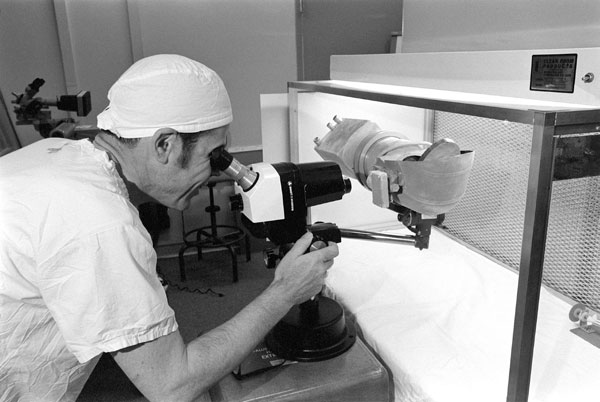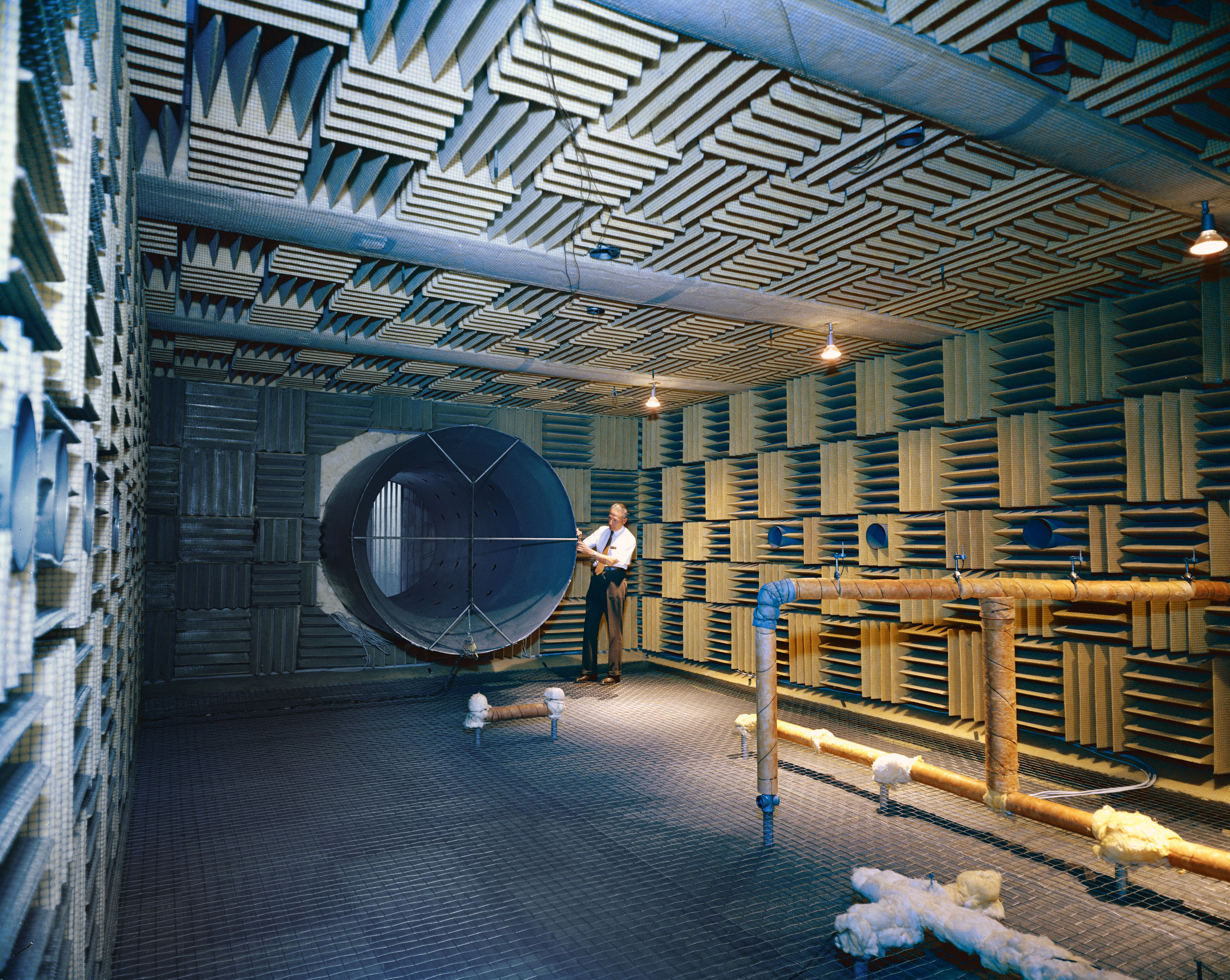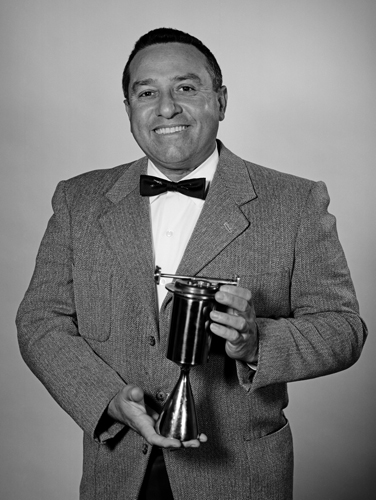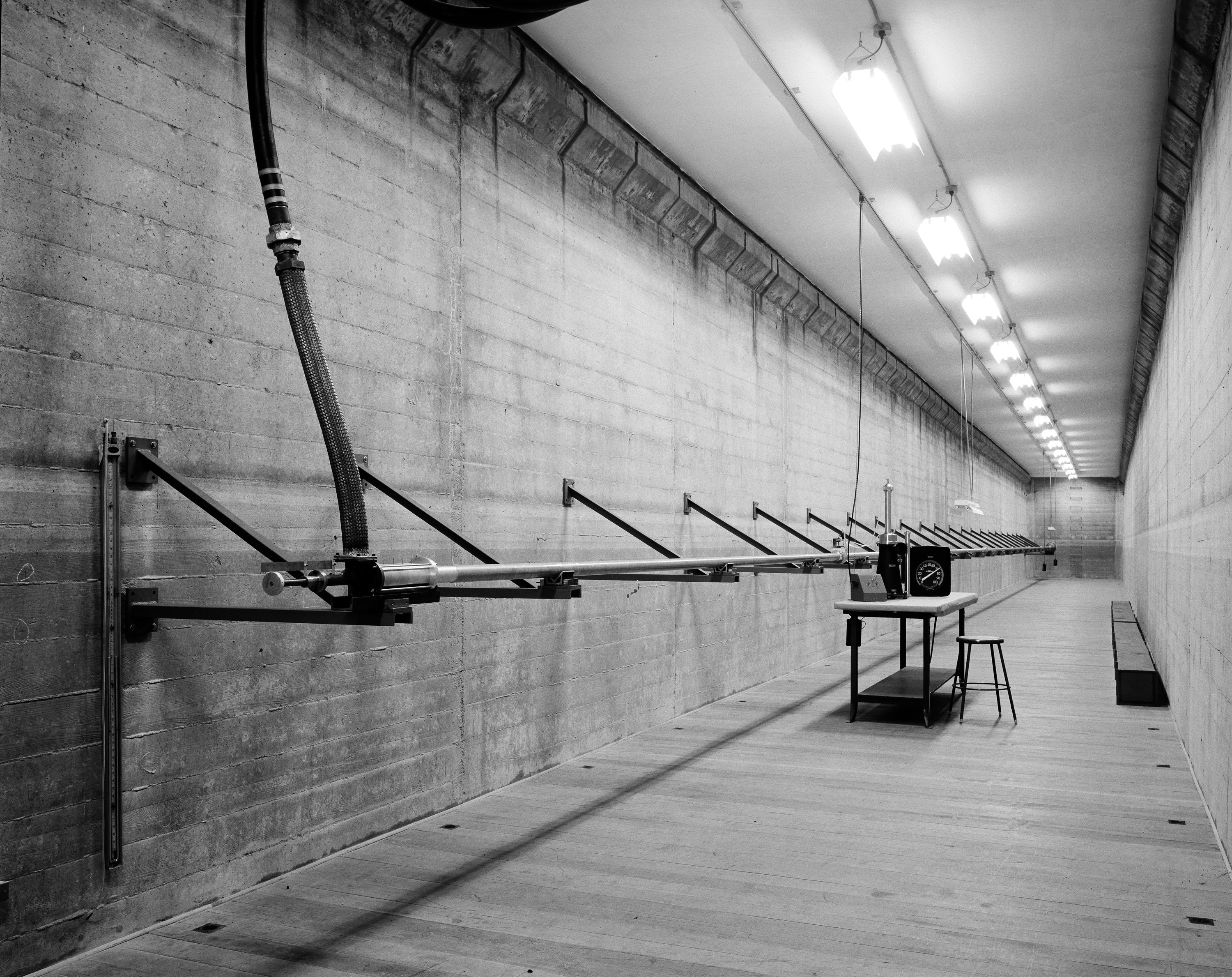Slice of History: Viking Stereo Viewer
Tuesday, December 4th, 2012
Each month in “Slice of History” we feature a historical photo from the JPL Archives. See more historical photos and explore the JPL Archives at https://beacon.jpl.nasa.gov/.
 Viking Stereo Viewer — Photograph Number 324-1954
Viking Stereo Viewer — Photograph Number 324-1954This interactive computer-based stereo viewing system was used to analyze Mars topography images generated by the cameras on NASA’s Viking 1 Mars lander. Two 17-inch video monitors faced a scanning stereoscope mounted between them on a table. Left and right lander camera image data were sent to the left and right monitors. Panning controls on the stereoscope helped align one image with the other to create a stereo image, 640 by 512 pixels in size. A mouse was used for finely controlled rotation of the monitors. An article about the system described a prototype mouse, used before this photo was taken in 1976. “The track ball is a baseball-sized sphere protruding from the top of a retaining box and capable of being rotated freely and indefinitely about its center …”
The resulting images could be displayed on additional monitors and were used to create contour maps and other images that aided lander surface operations. The system was developed by Stanford University and NASA’s Jet Propulsion Laboratory in Pasadena, Calif.
This post was written for “Historical Photo of the Month,” a blog by Julie Cooper of JPL’s Library and Archives Group.



























